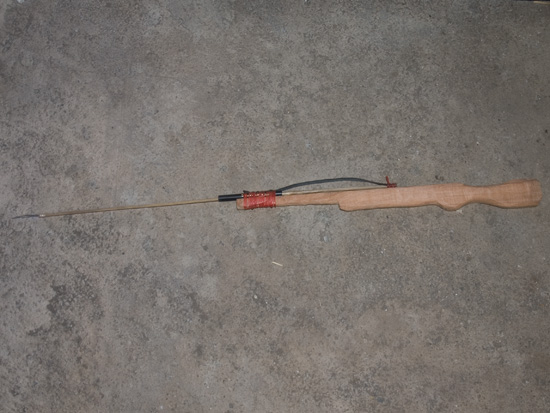Mandarinfish…Part 2…Mini Spearguns and why that’s better than the status quo…
Part 2….
Because mandarinfish (Synchiropus splendidus) spend most of their time hidden away within the reef, they are very difficult to catch using a standard collection net. The high demand within the hobby places a lot of pressure on fishermen to collect as many of these fish as possible. Therefore fishermen often resort to the use of cyanide, which can greatly increase catch rates. However, the overall long-term health of these fish becomes severally jeopardized.
However, while I was in Bali a promising alternative fishing technique utilizing a miniature speargun emerged from the Philippines. MAC invited in a Filipino fisherman to demonstrate how to build and use this contraption.
Here a series of photos demonstrates the making of the gun itself:
Here Ding Dong, the Filipino fisherman/trainer, shows the group of fishermen how the gun will work, and where to shoot the mandarinfish (the tail fin) without causing it any permanent damage.

Then the trainees built their own spearguns utilizing Ding Dong’s advice. First, an impression of the gun is drawn onto the wood.
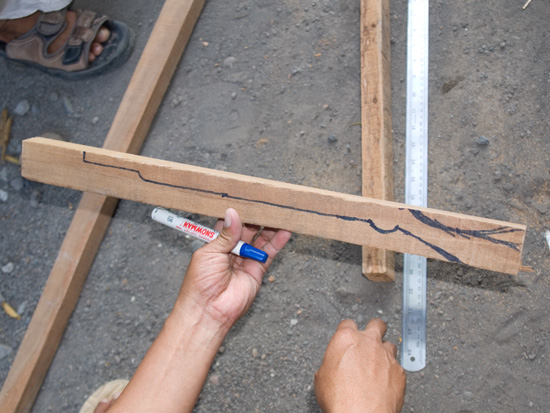
Next the gun is carved out of the wood block….

Here is the rough outline of the carved wooden speargun ( The Balinese have some of the biggest smiles on the planet 

Next, strips of bamboo are cut to form the spear shaft…
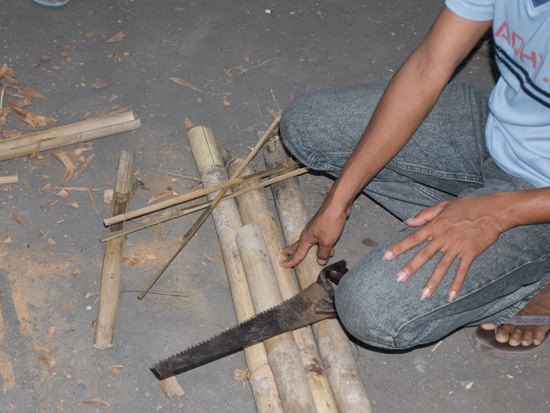
A paper clip is straightened out and then bent in half to create a dual-pronged spear. The ends of the paper clip are sharpened with sand paper.
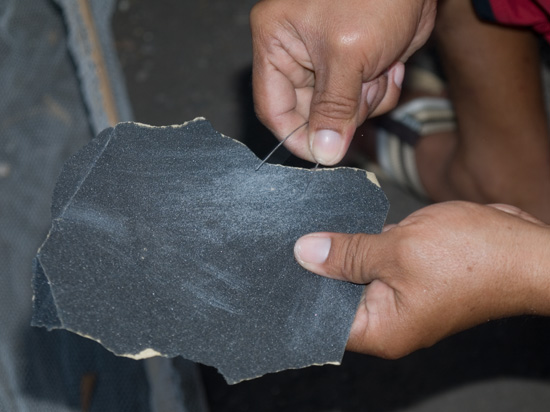
The paper clip is then fastened to the end of the bamboo spear shaft with monofilament fishing line…
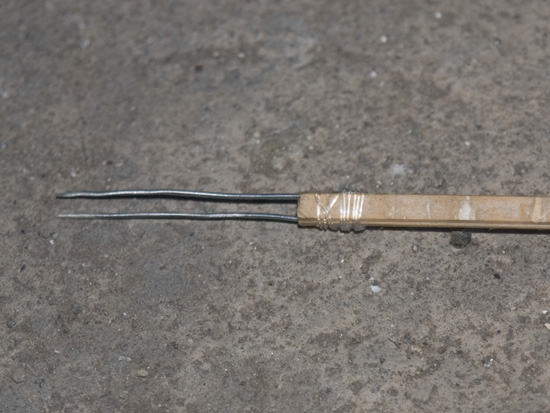
Here is the finished gun. The spear is attached to the gun with a long rubber band that provides the thrust to launch it. A plastic straw provides the “barrel” that will ensure a straight shot.
So now, how does this whole “spear the fish without killing it” thing work out? When the mandarinfish are active at dawn or dusk, they expose themselves much more than they do throughout the rest of the day when they are safe within the coral branches. The fisherman can get close enough with his spear (< 2 feet) that he can aim to shoot the fish right through the tail fin. The dual tip allows the fish to be pinned down against the sand and rubble bottom. The fisherman then has just enough time to catch the fish with his hands, and remove the spear point from the tail. The end result is that the fish only receives two tiny holes in the tail. Of course, I have to ask myself, ” What if they miss the tail, but hit the body?”. I will make myself believe that the learning curve is fast, and that the fishermen are expert shots underwater….

To anyone who has seen how fast and easily fish can repair and regrow their fins, it becomes apparent how minor this injury really is.
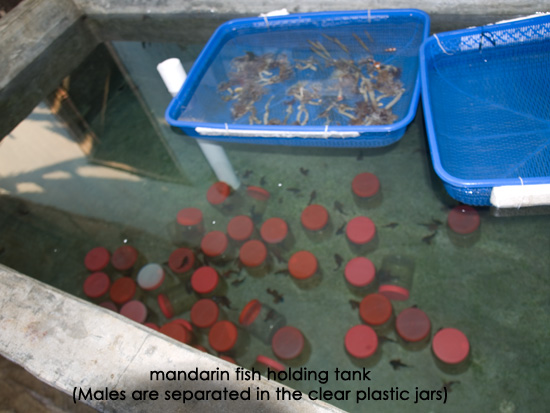
In a holding tank on Pulau Seribu (1000 Islands), Indonesia I observed about 100 recently caught mandarinfish. Most were already well on their way towards being healed. I would imagine that by the time these fish reach retail aquarium stores, the buyer would have no idea that this was the method that the fish was caught. Which, of course, presents a problem in the sense that it is still impossible to discern a cynanid-caught mandarinfish from a spear-caught fish. Therefore, really the best advice that I could give when it comes to purchasing a mandarinfish is:
1) Make sure your reef tank is large enough and well-established enough to support a live food population capable of sustaining a foraging mandarinfish. Eventually you might be able to get it to eat frozen or pellet food, but initially don’t count on it.
2) Only buy a mandarinfish that seems eager and active. Check for sunken bellies, as this is a clear indication that the fish is not eating well, or recieving nutrition. Sometimes even mandarinfish that will eat a little bit will still ultimately waste away. This is most likely the case with many cyanide-caught mandarinfish that initially seem healthy.
3) Keep in mind that these beautiful fish come from the wild and are not simply another replaceable aquarium component. Educate yourself as much as possible, and do your best to avoid buying cyanide-caught fish and marinelife.
4) Seek out aquacultured fish. There is already a company in France that is raising aquacultured mandarinfish, so hopefully it will only be a short time before this fish is more commercially viable as a cultured fish here in the US.

